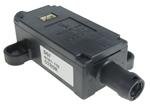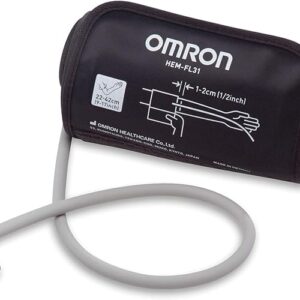Description
Here’s a Pros and Cons Q&A for the OMRON D6F-01A1-110 MEMS Flow Sensor:
🔧 Product Overview:
- Model: D6F-01A1-110
- Type: MEMS (Micro Electro Mechanical Systems) Flow Sensor
- Medium: Air (clean, dry)
- Flow Range: 0–1 L/min
- Output: Analog Voltage (1–5 VDC)
- Accuracy: ±0.3% of full scale
- Supply Voltage: 10.8–26.4 VDC
- Sensing Element: MEMS-based for high sensitivity and low flow detection
- Applications: Airflow control in HVAC, medical devices (e.g., respirators), and industrial automation
✅ Pros:
- High Sensitivity at Low Flow Rates
- Accurately measures very low air flows (0–1 L/min), making it ideal for precision airflow control in medical or sensitive industrial processes.
- MEMS Technology = Fast & Stable Response
- MEMS sensing provides quick response, low drift, and compact size with high accuracy. Especially valuable where real-time flow monitoring is critical.
- High Accuracy (±0.3% FS)
- Excellent accuracy for such a small flow range, enabling fine control, particularly in respirators, analyzers, or cleanroom applications.
- Wide Supply Voltage Range (10.8–26.4 VDC)
- Flexibility in integration with different control systems or PLCs without needing special voltage regulation.
- Analog Output (1–5 VDC)
- Standard voltage output easily interfaces with most data acquisition systems, PLCs, or analog input modules.
- Compact and Lightweight
- The small form factor is easy to integrate into space-constrained designs, such as portable equipment or embedded systems.
- Reliable Brand Support (Omron)
- Comes with Omron’s quality, documentation, and support for integration into industrial and medical systems.
❌ Cons:
- Air-Only Application
- Only suitable for clean, dry air. Cannot be used for liquids, corrosive gases, or moisture-laden air. This restricts it to non-contaminating, dry environments.
- Fixed Direction Flow
- Designed for one-way flow. Reverse flow may damage the sensor or give incorrect readings unless explicitly supported.
- Analog Output Only (No Digital Interface)
- Output is voltage only (1–5 VDC); lacks I²C, SPI, or UART digital communication, which may limit integration in smart systems or IoT devices.
- Susceptible to Particulate Contamination
- Dust, oil mist, or other particulates in the air can degrade sensor performance or cause clogging, requiring filtration upstream.
- Limited Flow Range (0–1 L/min)
- Not suitable for medium or high-flow applications. For anything above 1 L/min, you’d need a higher-capacity model.
- No Built-In Display or Alarming
- Requires external monitoring or interfacing to observe values—this is expected for most embedded sensors but worth noting.
- Temperature and Humidity Sensitivity
- While compensated to some degree, extreme temperature or humidity changes may still affect accuracy or stability.
❓ Q&A – Common Use Considerations
Q1: Can this sensor be used for measuring gas other than air?
🔹 No. It’s calibrated for air. Using it with other gases (e.g., CO₂, nitrogen, or helium) may cause inaccurate readings unless custom-calibrated.
Q2: Is this sensor bi-directional?
🔹 Generally, no. It’s designed for unidirectional flow. Check datasheet or use a bi-directional model if needed.
Q3: What kind of maintenance is required?
🔹 Minimal, but you must ensure clean, filtered air and avoid exposure to moisture or oil vapors. Regular filter checks upstream are advisable.
Q4: How does it connect to a system?
🔹 The sensor outputs 1–5 VDC corresponding to 0–1 L/min flow. Connect this to an analog input on a PLC, microcontroller, or DAQ system.
Q5: Can I use it in medical ventilator systems?
🔹 Yes—its accuracy, low-flow range, and fast response make it suitable for ventilator and respiration monitoring, assuming all air is dry and filtered.
🧩 Ideal Applications:
- Medical ventilators and anesthesia machines
- Respiratory monitoring systems
- Precision laboratory instruments
- Airflow monitoring in cleanrooms or enclosures
- Leak detection in pneumatic systems
- Small-scale HVAC flow control
✅ Summary:
The OMRON D6F-01A1-110 is a highly accurate, compact, and sensitive MEMS airflow sensor tailored for low flow (0–1 L/min) applications. It excels in precision air monitoring, particularly for medical, lab, and clean industrial environments.
However, it’s limited to clean, dry air, lacks digital output, and requires external analog interfacing. It’s not suitable for liquids, humid gas, or high-flow applications.




Reviews
There are no reviews yet.